Search
Search Results

Image
Ramesses VI in Profile
Profile of pharaoh Ramesses VI (aka. Ramses VI). Similar drawings have been found inside the king's tomb. 1143-1136 BCE (20th Dynasty of Egypt). Exhibited in the Louvre Museum, Paris, France (N 498).
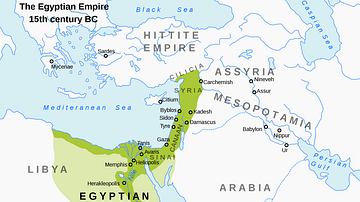
Definition
Egyptian Empire
The Egyptian Empire rose during the period of the New Kingdom (c. 1570- c. 1069 BCE), when the country reached its height of wealth, international prestige, and military might. The empire stretched from modern-day Syria in the north to modern-day...

Article
The Battle of Kadesh & the First Peace Treaty
Ramesses II (The Great, 1279-1213 BCE) ruled Egypt for 67 years and, today, the Egyptian landscape still bears testimony to the prosperity of his reign in the many temples and monuments he had built in honor of his conquests and accomplishments...
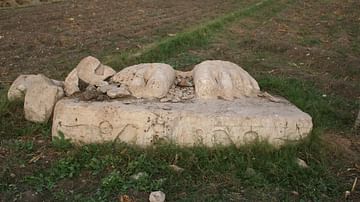
Image
Per-Ramesses
Per-Ramesses was the new capital of Egypt built by Ramesses II (1279-1213 BCE). However, due to the shifting of the Nile, the city was abandoned, largely dismantled, and moved south to the new city of Tanis with some monuments taken to Bubastis...

Video
Ramesses II, Egypt, c. 1250
More free lessons at: http://www.khanacademy.org/video?v=PXUKfJ4XDk4 Ramesses II, Herakleopolis (Temple of Harsaphes), New Kingdom, Egypt, c. 1250 B.C.E. (University of Pennsylvania Museum of Archaeology and Anthropology) Speakers: Monica...
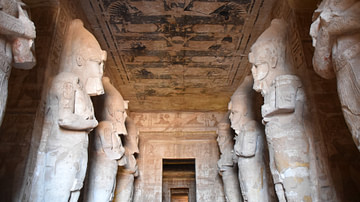
Image
Abu Simbel, Interior of the Temple of Ramesses II
The hypostyle hall of the Temple of Ramesses II at Abu Simbel is 18 m (59 ft) long and 16.7 m (55 ft) wide and is supported by eight massive pillars depicting the deified Ramesses linked to the god Osiris. The temple's interior is decorated...
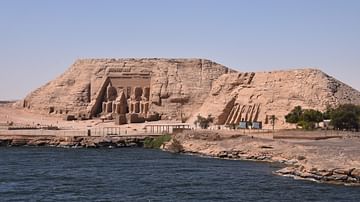
Article
Sailing on Lake Nasser towards Abu Simbel
In ancient times, the First Cataract at Aswan marked the southern frontier of Egypt. Beyond lay the land of Nubia, which stretched along the river Nile from the First Cataract southwards for about 250 kilometres (155 mi). This region, known...
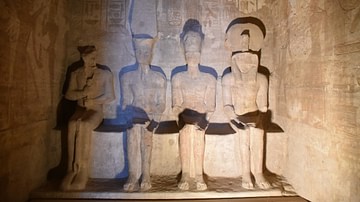
Image
Abu Simbel, Sanctuary of the Temple of Ramesses II
In the sanctuary inside the Temple of Ramesses II (Great Temple) at Abu Simbel are rock-cut sculptures of four seated figures: Ra-Horakhty, the deified king Ramesses, and the gods Amun Ra and Ptah. The architects of ancient Egypt in the 13th...
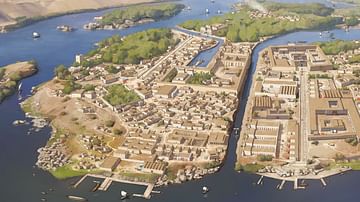
Image
Reconstruction of Pi-Ramesses
Reconstruction of the Egyptian capital of Pi-Ramesses, established by Ramesses II (1279-1213 BCE) in the 13th Century BCE. Illustration by Rocío Espin.
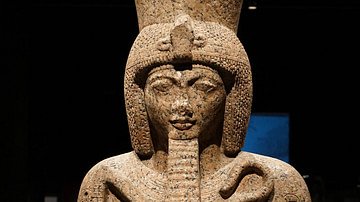
Image
Statue of Ramesses II
This granite statue of Ramesses II was discovered at the Temple of Khnum, Elephantine, Egypt (1280 BCE). Ramesses II was a very successful ruler between around 1279-1213 BCE. Here he holds a crook and flail and wears a double crown, symbolising...